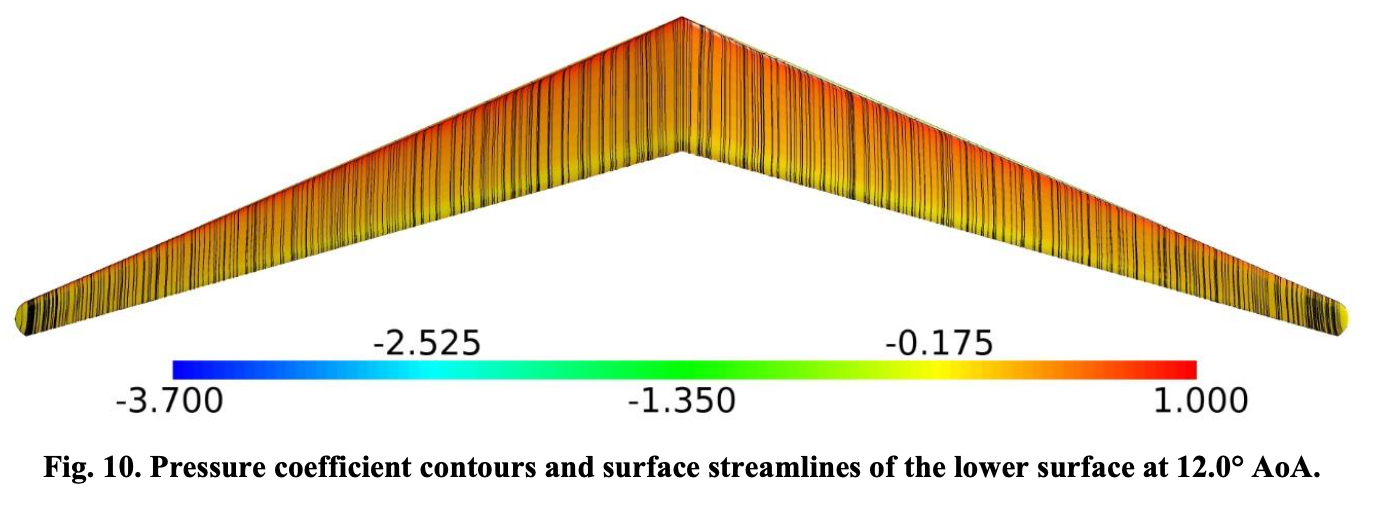The two pictures in the question only show how to decompose the speed vector into the normal and parallel components. They are nowhere near "real" flow vectors.
First I recommend to read this answer so you get an idea how air is accelerated and decelerated when flowing around an airfoil. Note that the low pressure area over the wing will suck in more air. This answer might also be helpful because it looks closer at the boundary layer.
With a swept wing the same happens, but now the flow will not stay at one wing section but show an added sideways component. Again, air is sucked into the low pressure area, but because that area is a little to the side of the direction of motion of the wing, the flow lines will initially move towards the center of the wing on the upper side in case of sweepback.
But that cannot last: The pressure recovery over the rear part of the airfoil reduces this bending, so the flow lines become almost parallel to the direction of motion of the wing. The lower the local pressure, the more the flow lines bend inward. Higher than ambient pressure at the trailing edge or on the lower side of the wing will bend the flow lines outward accordingly.

Let the red color denote suction: It bends the flow lines (black) towards it, creating a spanwise flow component. The higher the suction (the redder the color), the bigger the bending. The cyan arrows show the flow lines inside the boundary layer. By losing some of the early acceleration to friction but being subject to the same deceleration in the region of the pressure rise, the boundary layer flow shows a stronger tendency towards the tip. To be precise: The acceleration and deceleration acts in a direction perpendicular to lines of the local relative chord. The sketch above exaggerates this bending for the sake of clarity.
Now we must look at the boundary layer to get the full picture: Here the flow speed is reduced by friction, so the result of that initial inbound acceleration is worn away gradually. The result is a twist of the local speed vectors over the thickness of the boundary layer such that the inbound component is gradually reduced the closer you get to the wing's skin. Now the deceleration in the area of pressure recovery will slow down the already decelerated air close to the wing, and again that slowing will happen in a direction perpendicular to the lines of equal chord. If this deceleration is sufficient, it will leave the boundary layer flow with an outward speed component. Such a deceleration brings the flow close to separation so it occurs only at higher angle of attack when the wing approaches stall. Note that only the boundary layer will exhibit a tipwise speed component.
Only when the flow separates, the boundary layer thickens past the separation line (blue line in the sketch above) and the spanwise flow will become significant. Separated flow is characterized by a local forward speed component, and now, past the separation line, you get a layer of air which is left with mostly a spanwise component; outboard in case of a sweptback wing and inboard in case of a forward swept wing.
EDIT
This paper presents a CFD study on the PRANDTL-D P-3C model aircraft using the OVERFLOW software. Figures 10 and 11 show the boundary layer flow on the lower and upper surface and illustrate nicely what happens. Note that this particular wing has a washout of -10° towards the tips which is essential to keep tip flow attached.

Lower surface streamlines. Only the 12° AoA case is shown because all others look quite the same.

Upper surface streamlines for angles of attack from 0° to 17.5°. The development of spanwise flow with the ever steeper pressure recovery at higher angles of attack should be evident. Note that flow direction past the separation line (the area with yellow-greenish tint) is from back to front.







